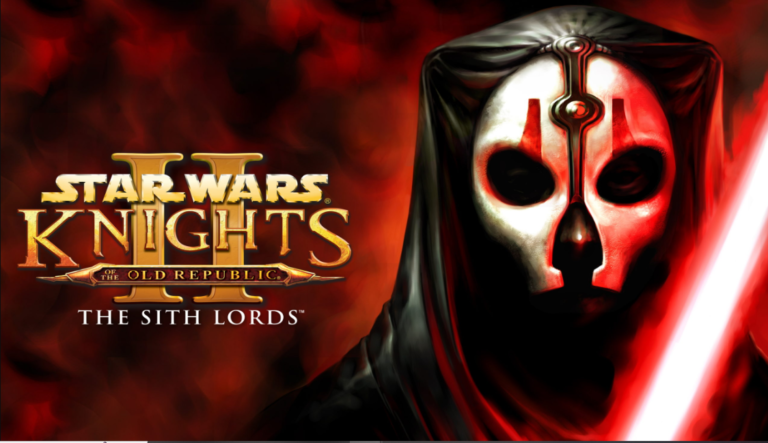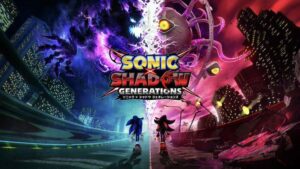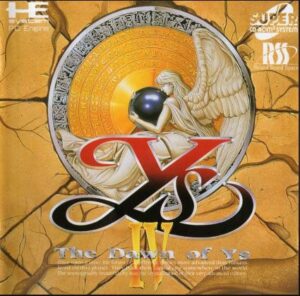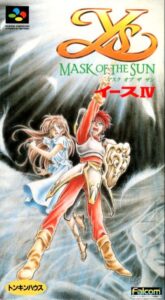The world is no stranger to sequels, some might even say the entertainment industry is overly reliant on them. History has provided us with many examples of sequels that have failed to live up to the original. But rarely have we seen a sequel that lives up to the legacy of its predecessor and even fewer exceed it. Today’s review focuses on one such masterpiece that has beat the odds to forge a legacy even greater than that what came before. This is Star Wars Knights of the Old Republic 2: The Sith Lords!
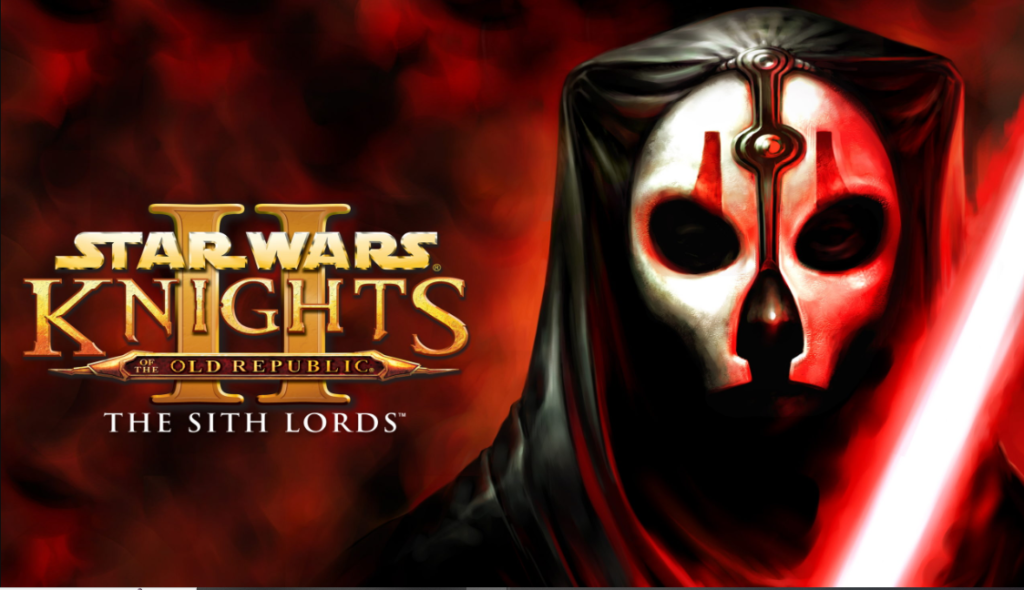
Leadup to Release & Overview
Now, before we dive into The Sith Lords let us take a moment to discuss the original Knights of the Old Republic or KOTOR for short. After release in 2003 KOTOR received numerous accolades, being critically praised as one of the best RPGs on the market and one of the best Star Wars games ever made. It won several awards and was even named the 2003 Game of the Year. Seeing this success, publisher LucasArts wasted no time in greenlighting a sequel for development. But here is where things get interesting… Bioware declined the offer to develop a sequel, instead opting to focus on their own Intellectual property. They would start work on Jade Empire, another Bioware developed cult classic. However, they did recommend a studio to LucasArts to develop a KOTOR sequel. That studio was none other than Obsidian Entertainment.
Working on an upgraded variant of the Odyssey Engine (the same engine in which the original KOTOR was developed) Obsidian undertook the arduous task of developing a follow up to the incredibly beloved KOTOR. Obsidian was a relatively unknown studio by themselves, but they had a certain pedigree as many key members of the studio had come from Black Isle Studio, which was most famously known for developing Fallout 1 & 2. It was this team and their experience that Bioware was recommending. However, Obsidian’s task was made all the more daunting by an imposing limitation placed on them by LucasArts, the publisher.
LucasArts demanded that the game be completed and on store shelves by Holiday Season 2004. So, KOTOR 2 saw release in December of 2004. To provide some perspective the original KOTOR came out in July of 2003. Factoring in the post launch reception of the original and the time it took to find a replacement studio, Obsidian was given less than two years to develop a worthy sequel to one of the most beloved games of all time, whereas the standard industry time for game development is two to three years at the very least. This is the environment in which KOTOR 2 was created. This was at a time in which console games had no means of improving the package post release. Keep this in mind as we move forward.
Synopsis & Writing
Five years had passed since the events of the original Knights of the Old Republic. The Republic is on the verge of collapse and the jedi order is on the verge of extinction with the Sith order rising to take their place. You are the jedi exile, one of the last of the jedi knights. You return to the galaxy at war and your choices will shape the galaxy for generations to come. Will you guide the galaxy to a better tomorrow or will you usher in an era of darkness? The choice is yours.
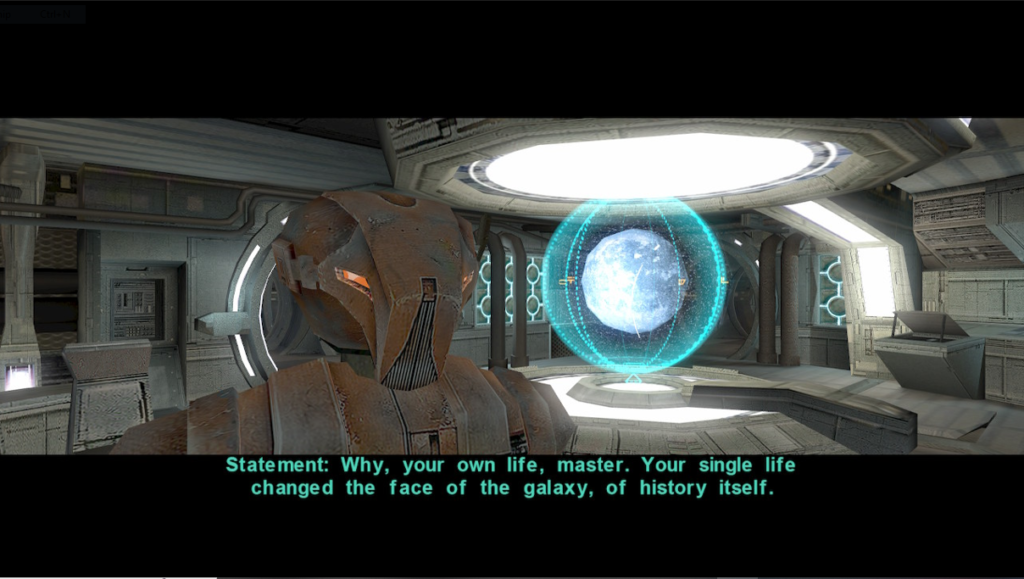
The original KOTOR had a well-earned reputation for its incredible writing that stood shoulder-to-shoulder with the films, and the Sith Lords somehow managed to top that. We have Chris Avellone to thank for writing and designing this game. Afterward he would go on to be the lead writer for games such as Fallout New Vegas as well as Jedi Fallen Order. The writing of the original KOTOR put a lot of emphasis on choosing between the light and dark sides of the force. That being said, there were certain biases against a particular alignment, going as far as locking players out of half of their companions if they followed down the path of the dark side. KOTOR 2 isn’t that obvious in playing its hand as both sides have their positives and negatives. This game also puts an emphasis on shades of grey and balance.
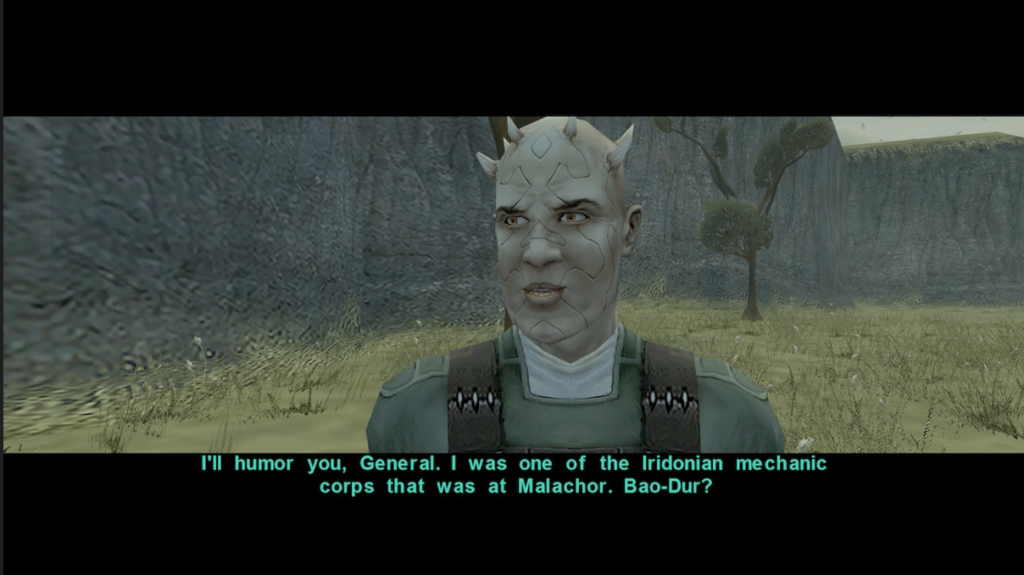
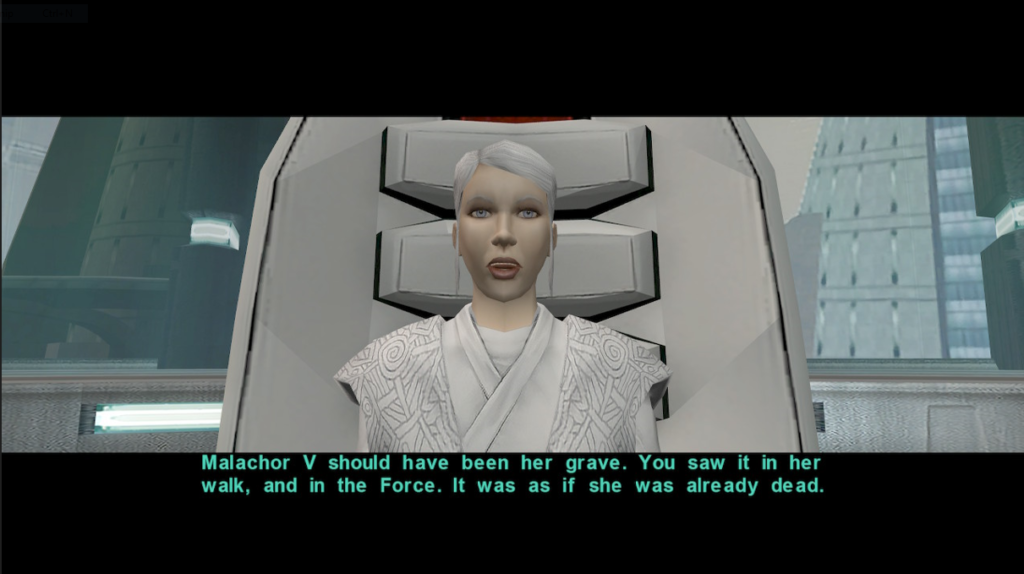
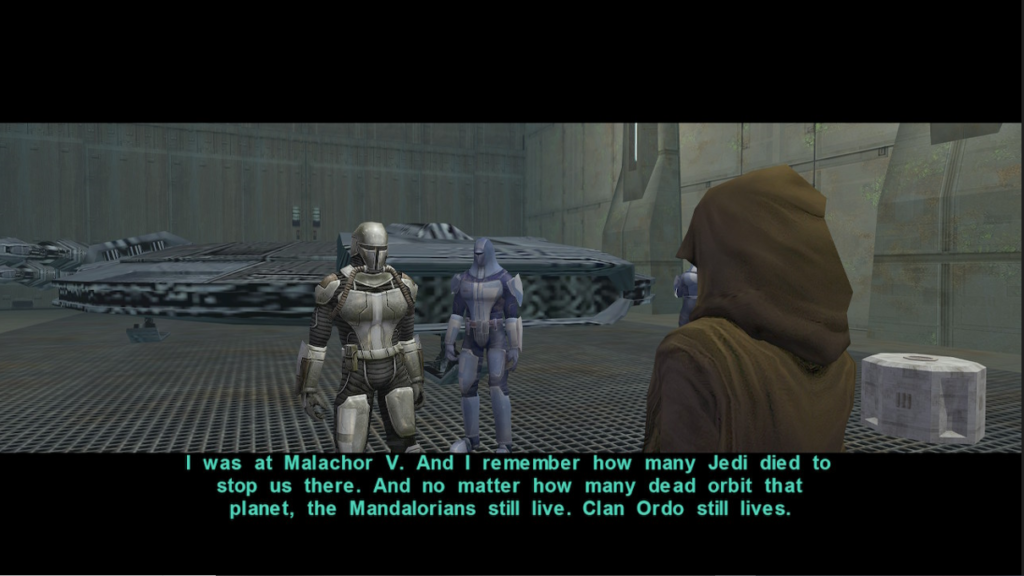

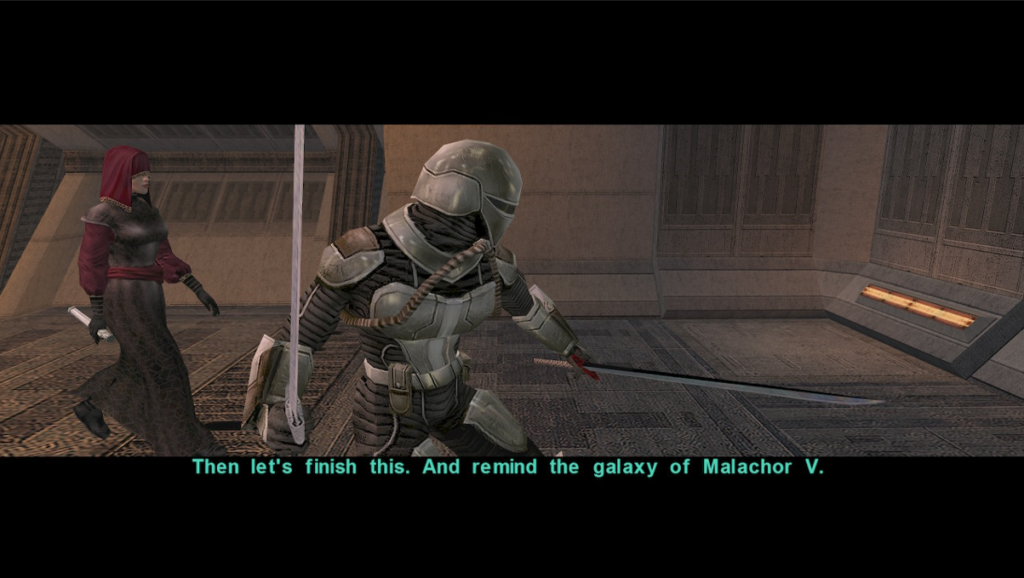
The original KOTOR was primarily designed to be played as a light side male as the player’s female equivalent had less narrative complexity. For example, the female player’s romance with Carth severely lacked the depth that could be found between a male player and Bastilla. KOTOR 2 however, has equal effort placed into both genders and how they interact with the world. Obsidian went as far as to have the characters treat the player entirely differently depending on what gender they choose, a fact that is even more impressive considering the shortened development time.
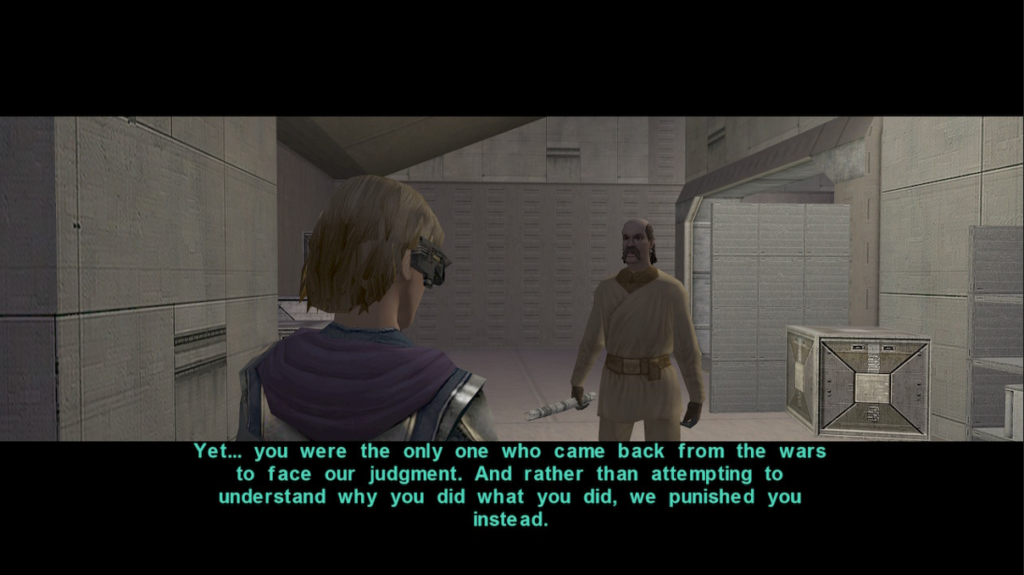
But the innovative writing doesn’t stop there, as with the original KOTOR you recruit companions to aid you on your journey. However, KOTOR 2’s cast is a lot more dynamic in comparison, going so far as to recruit different characters based on factors such as what gender you choose as well as your force morality. The writing of KOTOR 2 is dynamic, adaptive, and an example of writing that could thrive only in video games. It also deconstructs the very principles of role-playing games and video games in general.
Gameplay
The combat in the original KOTOR struck a chord with people for how fluid and dynamic it was, and KOTOR 2 managed to improve upon a winning formula. If you enjoyed the combat of the original, you should feel right at home. However, there are some notable additions. You can make use of your general skills to craft items and upgrades for your party; you can now equip two sets of weapons and swap between them on-the-fly in the heat of battle to suit the situation. Obsidian brought back all the force powers and abilities from the original whilst adding over 30 new abilities to use in customizing yourself as well as your allies.

You’re not the only thing that has been upgraded as you can recruit up to 10 companions to join the exile on their journey. And unlike the previous game you can “influence” them directly. Previously, in the original game your companions would comment on your actions, but it ultimately didn’t have a long-term effect on them or you apart from one choice. KOTOR 2 does not abide by this with the inclusion of the “influence” mechanic. As you make decisions throughout your journey your companions will agree or disagree with these choices, resulting in the gain or loss of influence. Raising or lowering influence with your companions will grant a variety of benefits, one of which will allow you to train some of your allies in the way of the force, putting new classes and abilities at your disposal. It would have been easy to coast upon the mechanics of the first game, but Obsidian went out of their way to improve on the original game and deliver something new mechanically. The game also features a rng based loot system throughout the game, meaning that the items that enemies drop changes every playthrough and will be different for everyone.
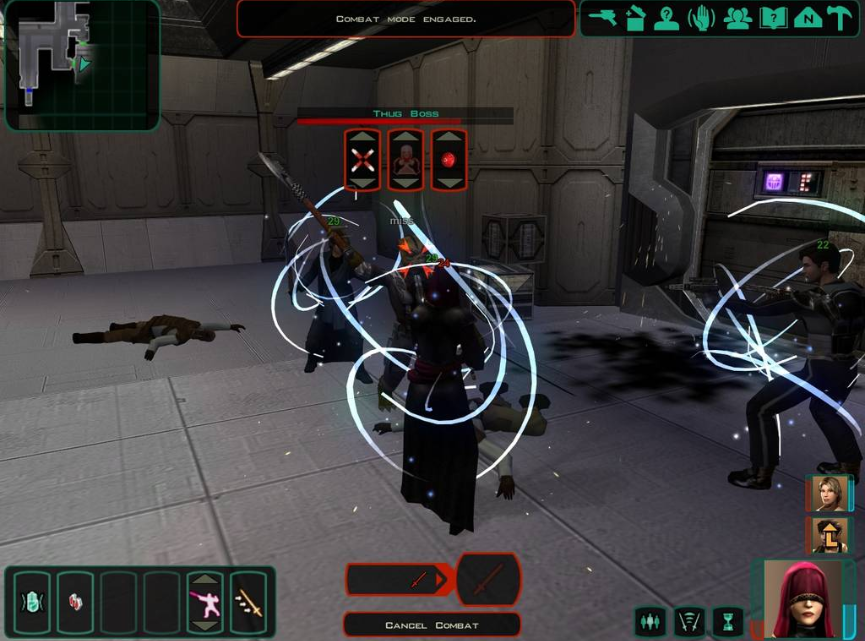
Presentation & Score
As with the original KOTOR, we have an entirely original musical score, this time courtesy of Mark Griskey. He composed a score that is both at home with the score of the original game as well as that of the films themselves. From the chilling atmosphere of Malachor to the chaotic Nar Shaddaa, the game delivers on excellent music. The game also features a sound test and theater mode, allowing you to listen to all the game’s music or watch all of the full-motion videos.
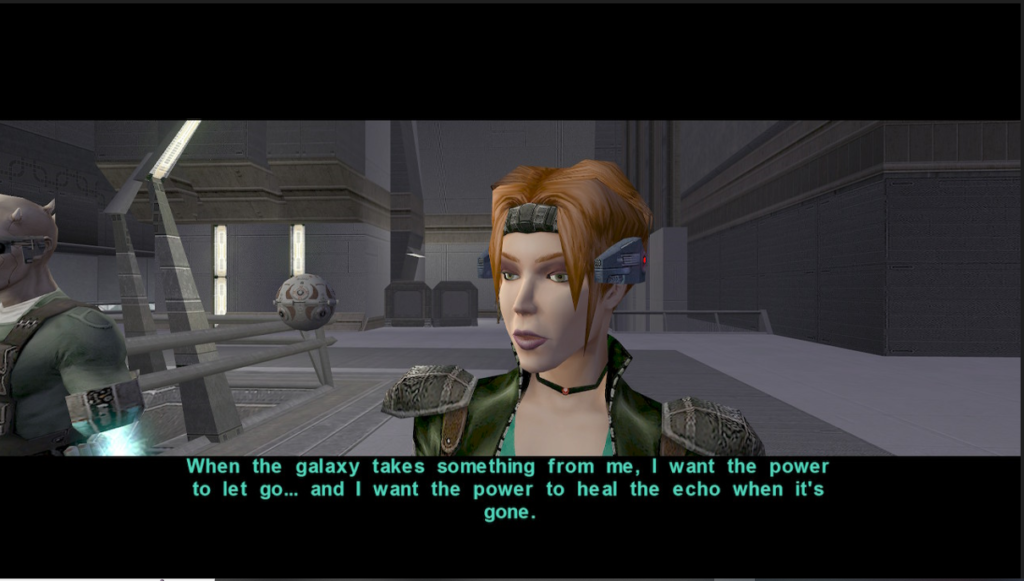
Now, when looking at KOTOR 1 & 2 side-by-side you may think there is not much difference between the pair, a fact that I’m willing to forgive given how the game was developed in only 14 months. However, there are remarkable improvements on the graphical side. The model work for the characters is much sharper than it was in the original game, the durasteel of the droids such as HK are much more luminescent and pop out to the eyes. KOTOR 2 does reuse the potential player character faces for NPCs across the game but the original KOTOR also did this. KOTOR 2 gives us seven planets to explore, beating out the number of explorable planets of the original. Of these seven, only two were in the original game, and these two planets look radically different in the sequel.
Cut Content & Bugs
Now with any form of entertainment there is always stuff left on the cutting room floor and KOTOR 2 having been developed in 14 months is no exception. Some planets had more cut than others. Nar Shaddaa cuts can still be felt somewhat through the awkward transitions of vanilla KOTOR 2. Some side quests were cut and are bugged as a result. But most of the cut content won’t be noticed by the average player, that is until you hit the endgame when the story barely holds together. This is clearly a result of the pressure of meeting the crunched deadline.
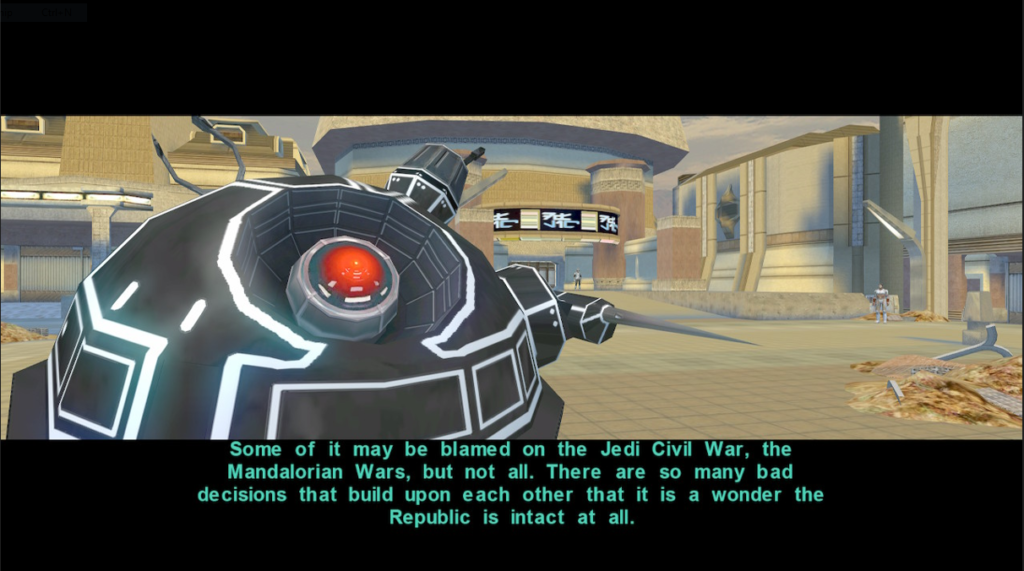
Now if you’re playing on a PC, you can enable the restored content mod, which was a massive love letter from modders to make KOTOR 2 the game Obsidian wanted it to be, and remedies just about every problem with the base game. The mod is unofficially endorsed as a post steam launch update, which brought the steam workshop to KOTOR 2, allowing players to download this mod with ease. The Nintendo Switch port was supposed to have a restored content DLC, but the update has been stuck in licensing hell due to Disney not being too keen about the idea as well as the problems associated with trying to bring a mod across platforms.
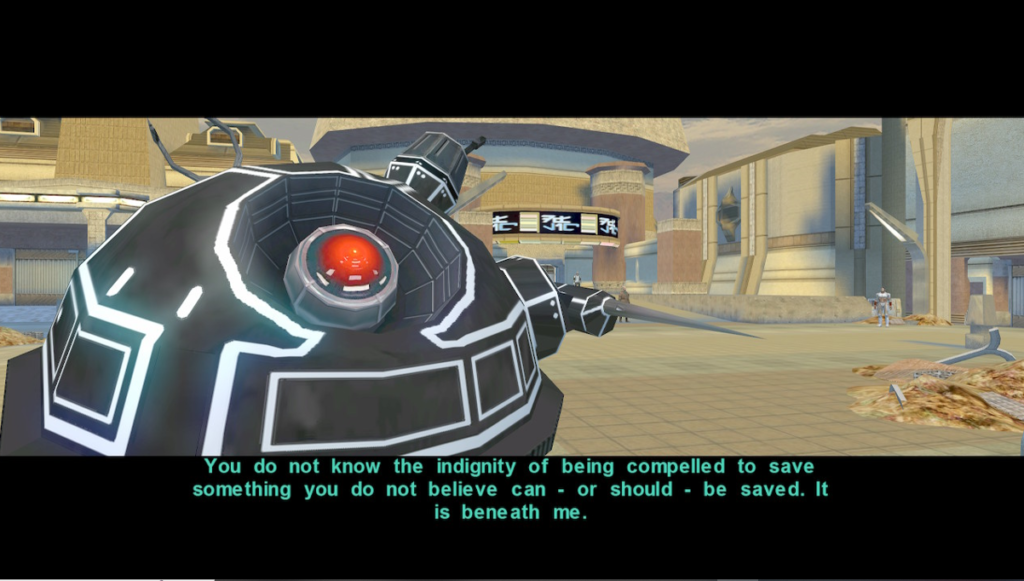
Given the rushed deadline of KOTOR 2 Obsidian didn’t have time to implement all the content they had planned for the game and the Quality Assurance pass was cut short as well, compounding even more bugs. The force ghosts still prevent me from moving on occasion, but fortunately it doesn’t affect my companions as much anymore. Certain sections suffer from artificial difficulty spikes particularly on Nar Shaddaa and Malachor. I’m attributing these problems to the crunched deadline as Obsidian has consistently been pretty good with the difficulty balance in subsequent titles.
Conclusion
Despite everything that was working against them, Obsidian managed to craft an even better game than what Bioware delivered. The original KOTOR is still considered a masterpiece, but KOTOR 2 manages to improve the experience in just about every way. KOTOR 2 is a tale of art despite everything the developers had to deal with. Knights of the Old Republic 2 is a highly adaptive masterpiece that every Star Wars and RPG fan should experience in their lifetime!

